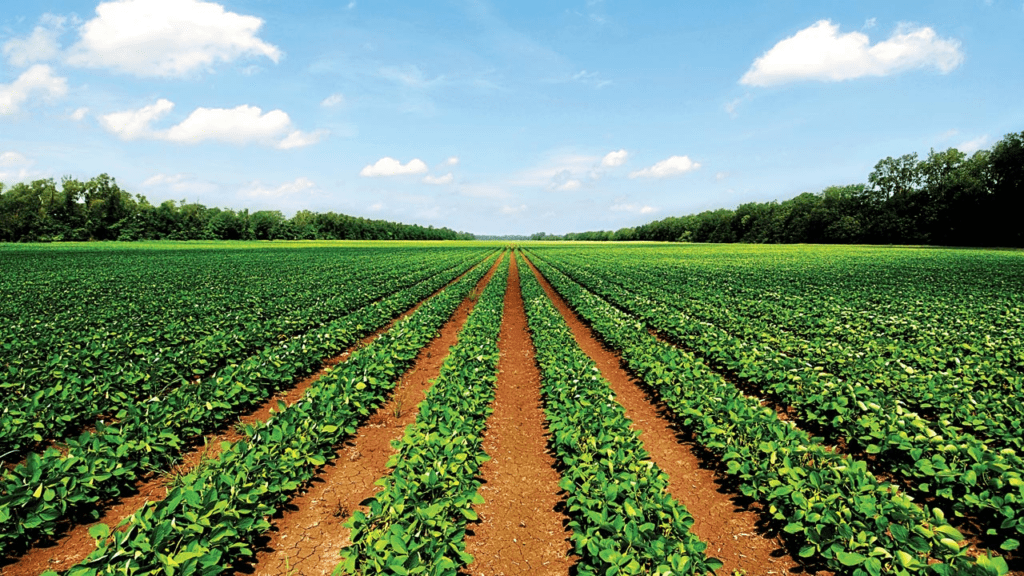As we venture into the future, the quest for sustainability leads us to rethink traditional farming practices. The need for a system supporting the environment and the community has never been more apparent.
In this context, the idea of collective effort in agriculture, known as co-farming, is gaining ground. At the heart of this movement, entities like Hosachiguru are pioneering the way forward, demonstrating how collaborative farming can lead to a greener, more prosperous agricultural future.
What is Co-Farming?
Co-farming, as an evolving paradigm in agriculture, promises more than just a return to the roots of traditional farming. It reimagines the agricultural landscape, blending the serenity of rural life with the innovations of modern living. The essence of co-farming lies in its ability to create a space where people can live, work, and thrive in harmony with the environment, providing a rewarding experience beyond conventional farming practices.
A Trending Farmland Investment
Co-farming is emerging as a trending farmland investment due to its innovative approach, which fosters collaboration and sustainability in agriculture. This rising trend reflects a growing desire among investors to participate in ventures that not only generate returns but also contribute positively to the environment and local communities.
- Connection with Nature: Provides a peaceful retreat from urban life, allowing individuals to immerse themselves in natural surroundings and experience the calming effect of the countryside.
- Sustainable Living Education: This offers hands-on learning opportunities about sustainable agriculture and environmental conservation, promoting awareness and understanding of eco-friendly practices.
- Health and Well-being: Engaging in farming and spending time in green spaces can improve physical health, reduce stress, and enhance overall well-being.
- Community Building: Encourages the formation of tight-knit communities where individuals share common interests in farming and sustainable living, fostering social connections and support networks.
- Access to Fresh Produce: Enables the consumption of fresh, locally-grown food, contributing to a healthier diet and lifestyle.
- Environmental Impact: Contributes to the preservation of the environment through eco-friendly farming practices, helping to reduce the carbon footprint and conserve natural resources.
- Educational Opportunities for Children: Creates an interactive learning environment for children, teaching them the importance of agriculture and sustainability while instilling a respect for nature from an early age.
Becoming a Co-Farmer with Hosachiguru
To become a Co-Farmer, the process is straightforward and transparent. With meticulous attention to detail in due diligence and accessible documentation for your scrutiny, they ensure that you are well-informed at every process stage.
- Project Selection: Choose a preferred farmland project that meets your location and budgetary needs first.
- Farm Plot Selection: Once you’ve identified your project, select a farm plot that suits your preferences in terms of size, price, and orientation.
- Reservation and Payment: Reserve your chosen plot with a nominal Rs. 1 lakh deposit, then complete payment in full or opt for convenient EMI plans spanning 12 or 24 months.
- Land Ownership Transfer: Upon completion of payment, ownership of the land swiftly transitions to your name, facilitated seamlessly by our in-house legal team.
- Co-Farmer Status: As a landowner, you automatically attain the status of a Co-Farmer, empowering you to select and cultivate trees of your choice while benefiting from our tailored design services.
Conclusion
Co-farming emerges as a beacon of hope for cultivating a greener agricultural future. This collaborative approach, exemplified by pioneers like Hosachiguru, underscores the importance of working together toward sustainable practices and community resilience. It’s a promising model that redefines farming as more than just a livelihood but a way of life rooted in harmony with nature.
FAQs
1) How are farm plots customized for Co-Farmers?
At Hosachiguru, each farm plot for CoFarmers is tailored with biodiverse designs, promoting sustainable agriculture and continuous cropping cycles through companion plants and the Syntropic method. This fosters efficiency, reduces chemicals, and enhances biodiversity for optimal results and a resilient food system.
2) Who should become a Co-Farmer?
Co-farming is for everyone, regardless of age or background. Sustainable living is accessible to all, and recent legislative changes have made land ownership easier.
3)How can managed farmlands benefit future generations? Managed farmlands provide stable food sources, appreciate in value, and can be passed down as legacy assets. Sustainable practices also preserve the land for future generations.
